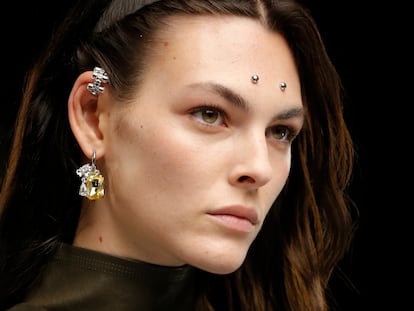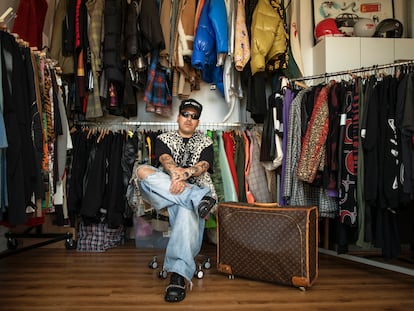‘The more meat, the more you like it’: Behind the appeal of male cleavage
Celebrities and designers such as Anthony Vaccarello have reclaimed an area until now reserved for women: the torso and the pectorals
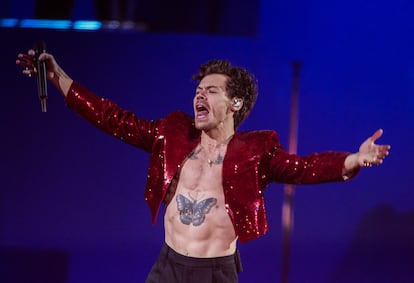

May. Cannes Film Festival 2023. Manu Ríos appears on the red carpet to present Strange Way of Life, the film by Pedro Almodóvar in which he appears dressed in Saint Laurent, who produced the film. He is wearing what looks like a low-cut shirt topped with a sash, designed by Anthony Vaccarello for the house’s collection for next fall. In the show, this garment was worn by a slim model with a flat torso, but on Ríos’s more muscular body, the shirt is something else: it creates a neckline that reveals part of his pectorals, the masculine equivalent of cleavage. The male chest has always enjoyed much more freedom to be displayed in public, but until now it had not used the weapons of women’s clothing on the red carpet. We’re not talking about Tarzan here: after decades of demure tuxedos, here’s the equivalent of the sexy evening gown for him. And not only Ríos wore it that night in Cannes: his co-star José Condessa also sported the look.
The stars have walked a short but low-cut path here: Jon Kortajarena arrived at the latest Vanity Fair Oscars party dressed in a white tuxedo with nothing underneath. The previous year Timothée Chalamet attended the same awards with a Louis Vuitton jacket that exposed his pale sternum, and Harry Styles has spent years wearing whimsical creations that show the torso, the work of Gucci and Spanish firms such as Palomo Spain and Alled-Martinez.
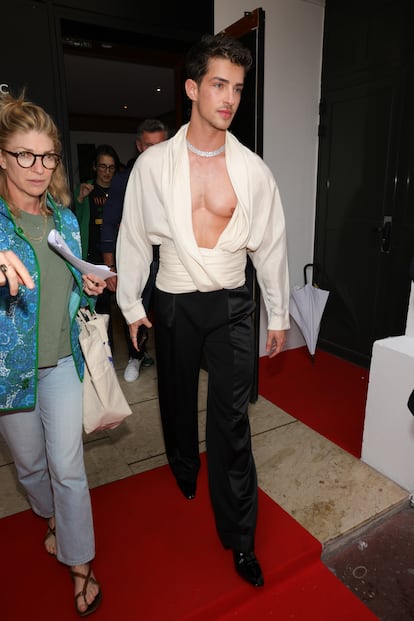
Cleavage for him
The term “no pecs, no sex” was first uttered in 1994 as a slogan for a Manhattan gym, one of the first created by fitness guru David Barton. Barton, a strongman turned successful businessman, was defined by the New York Times as “the man who made going to the gym cool” (although also, unfortunately, as someone who “has so many muscles that he looks like a square”). In the early 1990s, turning anything into an aspirational lifestyle was inescapably linked to sex: Calvin Klein ads filled magazines and billboards with explicit images of marble-chested male models and made stars out of male figures like Mark Wahlberg. In the novel American Psycho, published in 1991, Bret Easton Ellis devoted paragraphs and paragraphs to describing the exercise table of a wiry, crazy yuppie. TV shows that shaped the tastes of half the world, such as Melrose Place, were built on male casts of young, gym-hardened white men, specimens that spent more time in the pool, in the shower or in bed than anywhere else. But the phenomenon had not yet reached the red carpet.
“Why can you only look at a woman in those eyes, when a man can be attractive and sexy in the same way?” asks designer Alejandro Palomo by phone, who leads Palomo Spain and has been defending the male neckline since 2016. “Elements such as heels for men are not new. They were already there in the 16th or 17th century, but this way of sexualizing and showing the male body through clothing is completely new. It is now reclaiming that history, but it is also the result of a reality that we observe daily on social networks: the more meat, the more you like it. The erotic sells, and now men, if they wish, can participate in it. We no longer only look with desire at a woman’s cleavage: we also do it with Manu Ríos’s.”

There is a word for the male neckline: heavage. Back in 2009, the Wall Street Journal published that male décolletage. The Daily Mail echoed the phenomenon two years earlier and offered a series of yes or nos on male cleavage. George Clooney? Yes (he had a couple of shirt buttons undone). Rod Stewart? No (he didn’t have a single button closed). David Beckham? Depends (too much gold in the early 2000s).
The website Gawker tried to bring order: it said that heavage was the “stupidest term” that fashion had invented. In 2015, the British edition of GQ ruled supermodel David Gandy as the most qualified to show off cleavage. The messages in this regard, for ordinary men, were never hopeful: if it’s not Clooney, if it’s not Beckham or if it’s not Gandy, don’t try it at home. Let Palomo, the expert, speak: “Each designer creates with a sensitivity and an inspiration, with their own degree of innocence or sexuality, but whoever puts on the garment completes it.” He acknowledges, “I can think of garments that take on many lives, but I am aware that I, with my body, would not agree to that type of collar. They shine in a certain body, in a beautiful, well-worked chest.”

And then Manu Ríos did it again, on yet another difficult body to imitate. Shortly after that apparition, the internet was filled with buzz about Manu Ríos’s chest. “Torso of steel: how to make your neckline look as good on you as on Manu Ríos”, published GQ. He repeated the feat shortly after: “Manu Ríos surprises at the AMI Paris fashion show showing the muscles he had never shown,” headlined Men’s Health (they were referring to his quadriceps). The phenomenon represents the triumph of a contemporary vision of masculinity: it is the victory of European designers such as Vaccarello, Palomo and Ludovic de Saint Sernin. But the trend only underscores the timeless allure of the male torso, either with an open shirt and hairy chests, as in the seventies; muscular, as in the eighties; or defined and hairless like Keanu Reeves in the following decade.
Pectorals are forever
Miguel Marugán is a trainer at the San Antón gym in the center of Madrid. He says that in the eight or nine years that he has been working in gyms, the pectoral has always been an obsession for his clients. “It is one of the muscles that is worked the most, along with the biceps, one of the most gratifying and beautiful areas if you dedicate time to them. It makes you feel more powerful. People don’t usually say ‘I want Cristiano Ronaldo’s legs,’ but we do hear a lot in gyms ‘I want Chris Hemsworth’s torso.’ In girls they have always been buttocks and abs and, in boys, biceps and pectorals.”
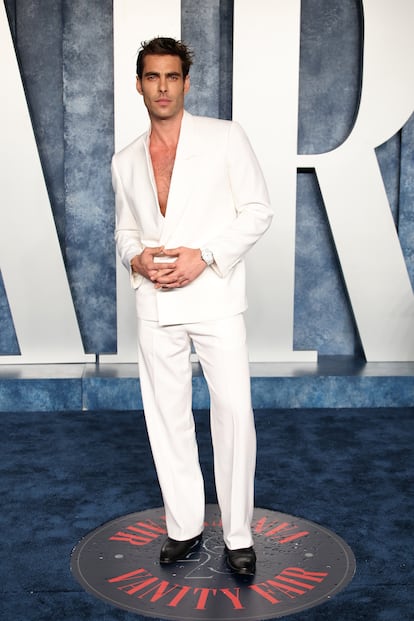
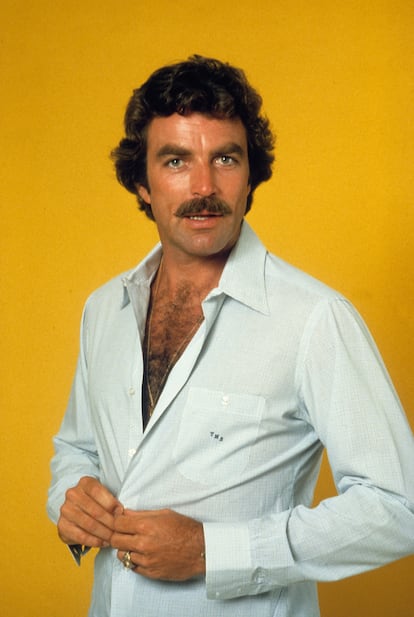
There seems to be universal agreement: according to some studies, the pecs are women’s favorite part of a man’s body. Other rankings, like one from Cosmopolitan, place it behind the abs and forearms. “A solid, masculine chest —rather than one that has not looked different since you were six years old except for getting bigger— is great,” wrote journalist Anna Breslaw. Instagram and TikTok are a gigantic repository of moving images of male chests, lean shirtless men doing things: dancing, cooking, talking about law and swimming with crocodiles. It is the extension of the image of the teen idol who shows his chest to reaffirm his status as a sex symbol. It is a transcendental step, too: starring in an underwear campaign has been a way for many teen idols to cross the threshold of maturity once they have passed the age of majority. Justin Bieber and Shawn Mendes both did it.
Apparently, for now it’s better to forget about body positivity. The Netflix aesthetic (bodies so sculpted that the abs can be seen on a mobile screen) once again brings a demand for perfection that, it seems, will never die. It was there in Greek sculptures, and now, it reappears in dress codes that redefine what men can wear in public. “A clavicle, a chest, all that part of the man that has almost always been covered,” concludes Palomo. “We just wanted to show those sensual, sexy, attractive and beautiful parts.” The male chest has taken to the street. Other areas are soon to follow.
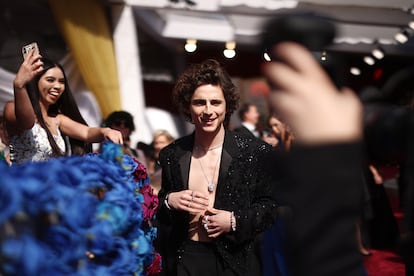
Sign up for our weekly newsletter to get more English-language news coverage from EL PAÍS USA Edition
Tu suscripción se está usando en otro dispositivo
¿Quieres añadir otro usuario a tu suscripción?
Si continúas leyendo en este dispositivo, no se podrá leer en el otro.
FlechaTu suscripción se está usando en otro dispositivo y solo puedes acceder a EL PAÍS desde un dispositivo a la vez.
Si quieres compartir tu cuenta, cambia tu suscripción a la modalidad Premium, así podrás añadir otro usuario. Cada uno accederá con su propia cuenta de email, lo que os permitirá personalizar vuestra experiencia en EL PAÍS.
¿Tienes una suscripción de empresa? Accede aquí para contratar más cuentas.
En el caso de no saber quién está usando tu cuenta, te recomendamos cambiar tu contraseña aquí.
Si decides continuar compartiendo tu cuenta, este mensaje se mostrará en tu dispositivo y en el de la otra persona que está usando tu cuenta de forma indefinida, afectando a tu experiencia de lectura. Puedes consultar aquí los términos y condiciones de la suscripción digital.
More information
Archived In
Últimas noticias
Most viewed
- Sinaloa Cartel war is taking its toll on Los Chapitos
- Reinhard Genzel, Nobel laureate in physics: ‘One-minute videos will never give you the truth’
- Oona Chaplin: ‘I told James Cameron that I was living in a treehouse and starting a permaculture project with a friend’
- Why the price of coffee has skyrocketed: from Brazilian plantations to specialty coffee houses
- David King, chemist: ‘There are scientists studying how to cool the planet; nobody should stop these experiments from happening’
